I've been looking at color, playing with color, researching color, experiencing color, struggling with color, and doing lots of painting with color, and it all boils down to that knowing about color or color theory doesn't make one a master at color.
It's a topic that will joyfully challenge me for the rest of my days, and I simply find it incredibly interesting.
As my understanding of color changed, my own palette changed definitely more than once. During the 30+ years that I've used color with oil painting and design work, I was pleasantly surprised to find there is more than one color system to explore. At first I would get that overwhelmed feeling, and finally just settled on thinking of color in terms of systems. You've heard the riddle - how do you eat and elephant? (one bite at a time) - and that's how I began handling the world of color.
Simple not by any means, but the following is my basic breakdown of the most common systems that I am personally familiar with, and added a couple of fun things near the end. Hope this will be useful to you.
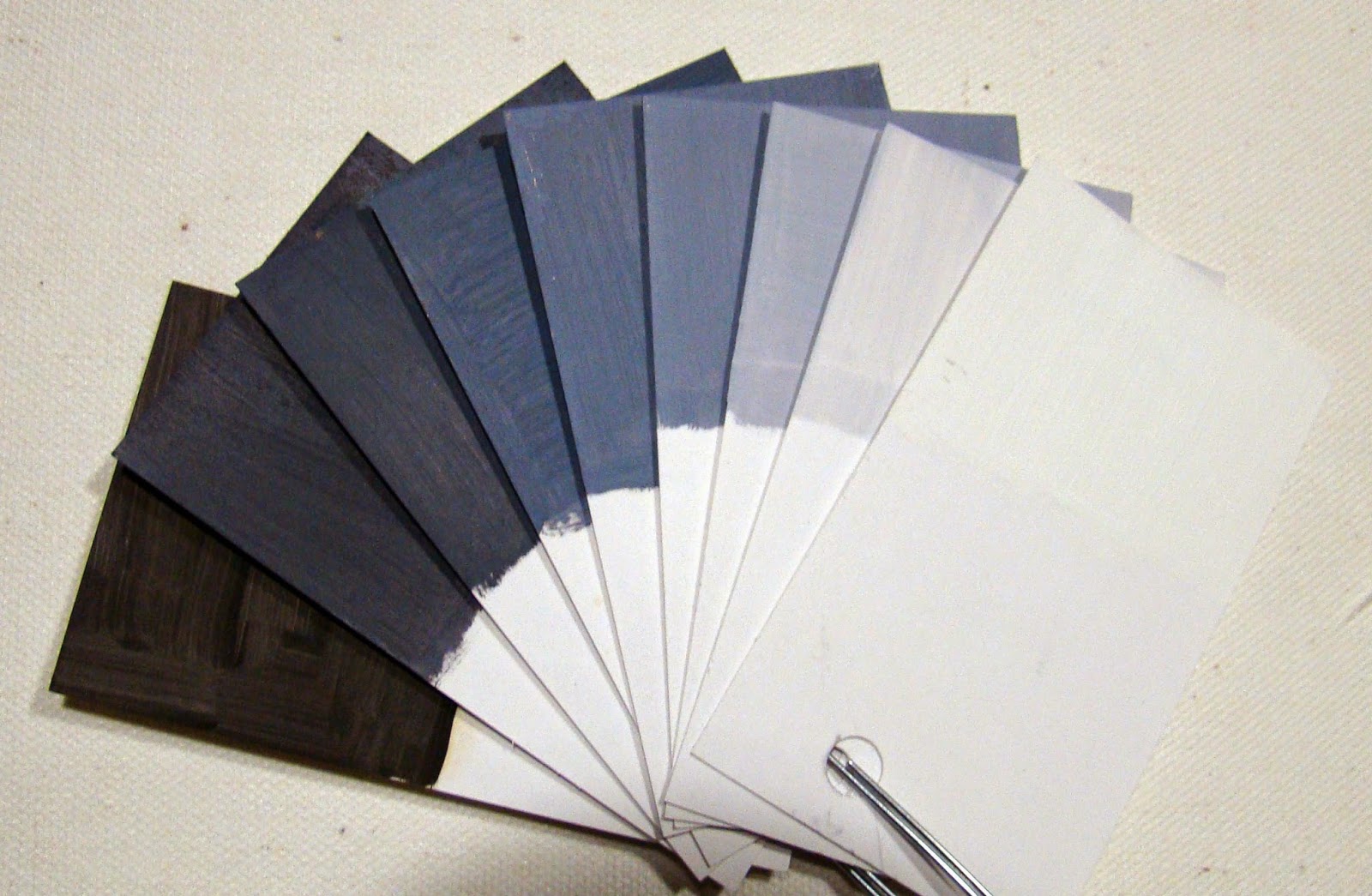 |
| 9 Value Scale B/W |
1)
Black and White for value studies. Yes, I think of these as colors in pigment. The Black can be mixed chromatically from Red Yellow Blue mixes, or just used straight from a purchased tube with warm or cool undertones. Whites have these same warm cool undertones, and as your eye becomes more sensitive, you'll notice this right away. Value studies are a must for the beginner or anyone, and is still something I do to this day to help keep my eye trained. You will discover as you do your own painting that color makes seeing values more difficult.
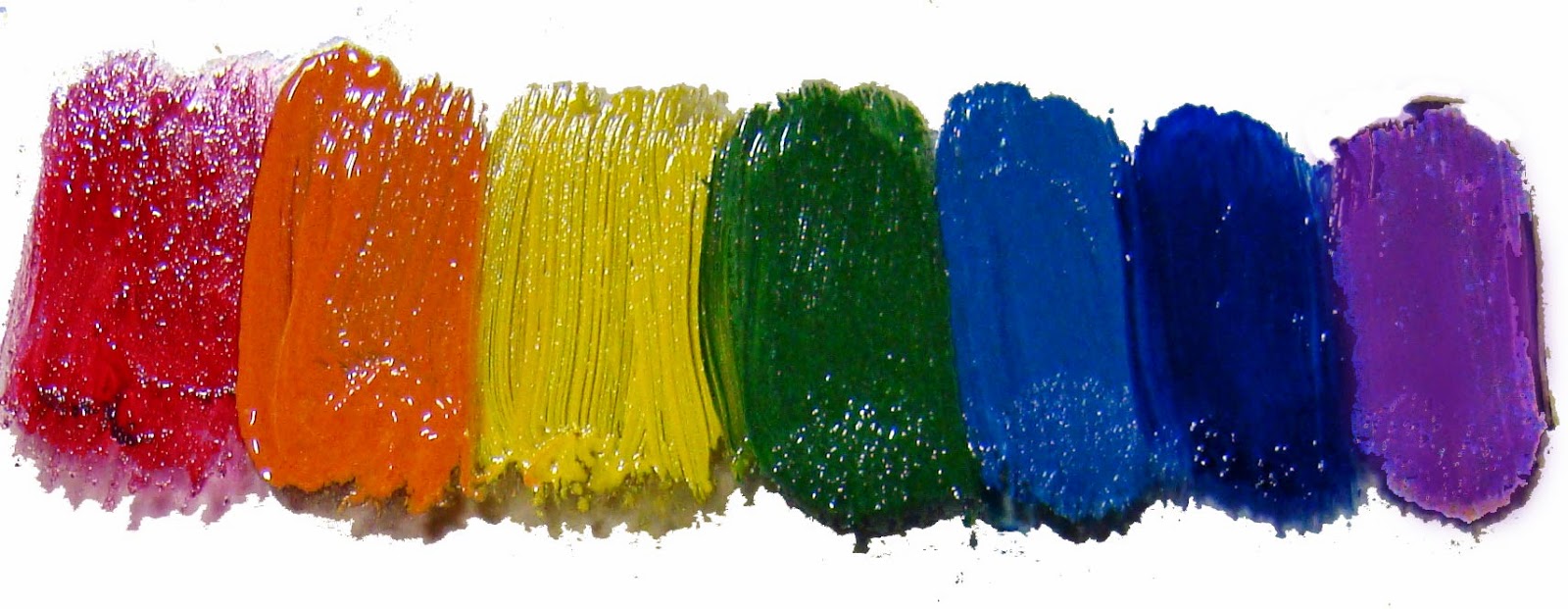 |
| ROY G. BIV |
2)
The Rainbow colors; our first introduction to color, the one we learned in grade school - Mr. ROY G. BIV - red, orange, yellow, green, blue, indigo, and violet is quite like a rainbow. What a fun way to learn color. Later you will see its usefulness for a more sophisticated system.
 |
| Traditional Color Wheel |
3)
The Traditional 12 color wheel provides for an unlimited number of harmonies. The Red Yellow Blue 3 primary triad, the 3 secondary colors of orange, green, purple, and 6 tertiary colors. Complements, split complements; the wheel can be described with transparent colors, earth colors, and various opaque combinations, limited palette choices, and extensive ones. An artist can make any number of combinations with this basic wheel and never run out of options. How you use them on the canvas adds to the variety as well.
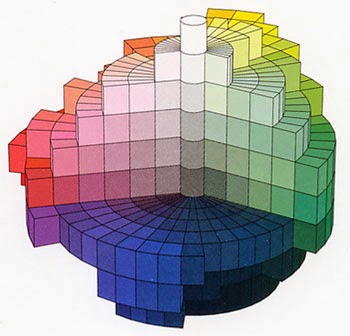 |
Munsell 3D
R Y G B V |
4) The Munsell system can be described in a wheel of colors, but it is better known by its emphasis on the three dimensions of color as in hue, value, and chroma as shown in the diagram on the left (good exercise for the brain). The Munsell System uses the primaries of red, purple, blue, green
and yellow. I my thinking, this model actually embraces the first three mentioned above. Do you see the similarity of Munsell and Roy G. Biv?
5) Printing color systems: The Prang system was the first model used for commercial printing in the 1800's. It derived from lithography/block printing using inks. It also uses Red, Blue, and Yellow as a color model. Later CMYK (Cyan, Magenta, Yellow and Black) became the standard and is currently being used for most commercial print work. If you are going to do any serious reproduction work, you will want to become more familiar with this system.
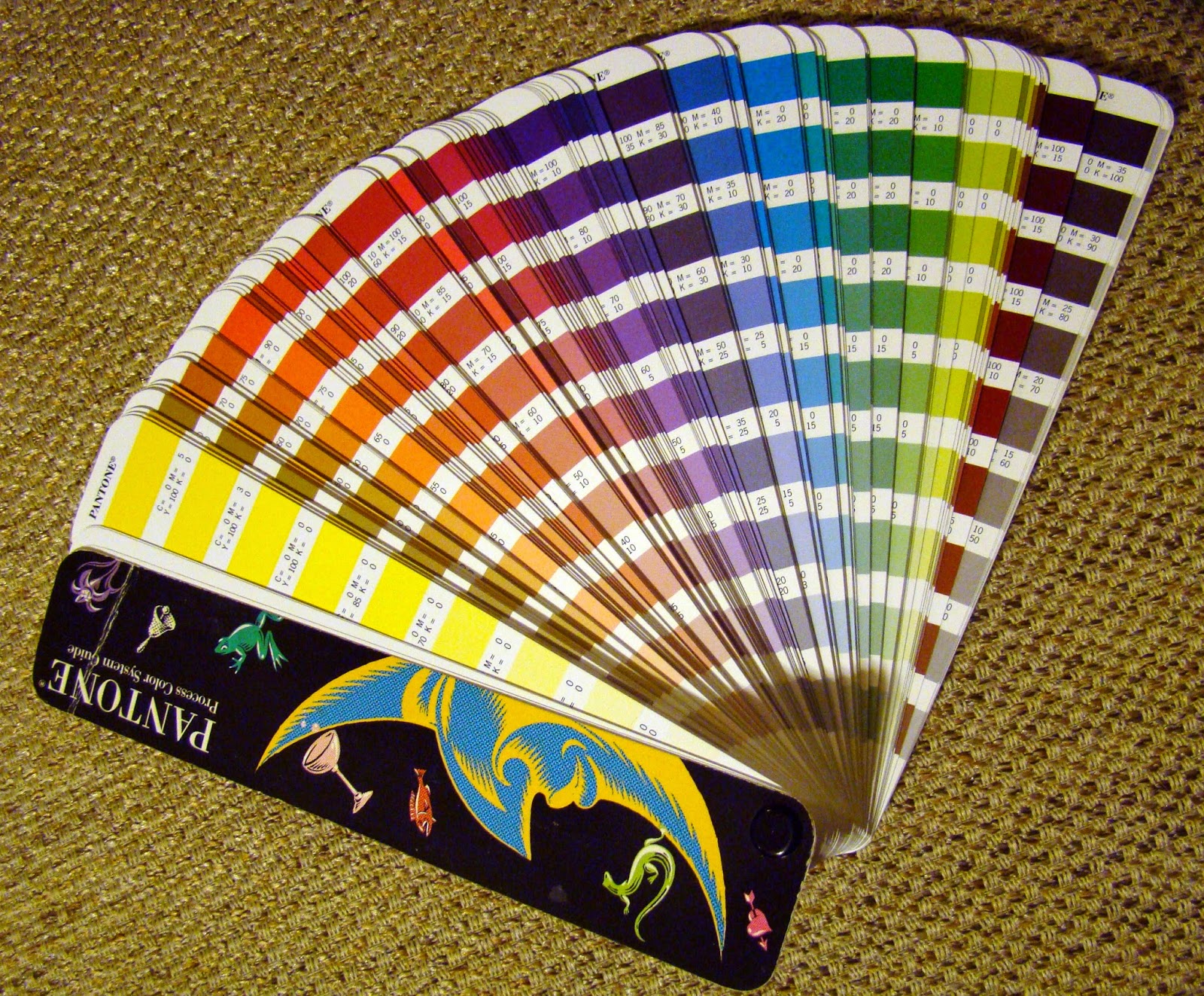 |
| Pantone/CMYK Conversion Chart |
6)
Designers' Color Systems use both the RGB computer model, and the CMYK ink system. The computer system deals with the RGB (Red, Green, Blue) as the primaries. These are the colors reflected on computer and TV screens using light rather than pigment and especially necessary in web design. This system requires a software program to convert the colors into CMYK for printing. Another commercial ink model is known as Pantone colors and has a full spectrum of ink colors - light to dark and pale to intense as shown on the right. The term Pantone is also a brand of ink, and offers the basic CMYK inks. Lots of fun, and an extensive topic for study if you take this route as a form of artistic expression.
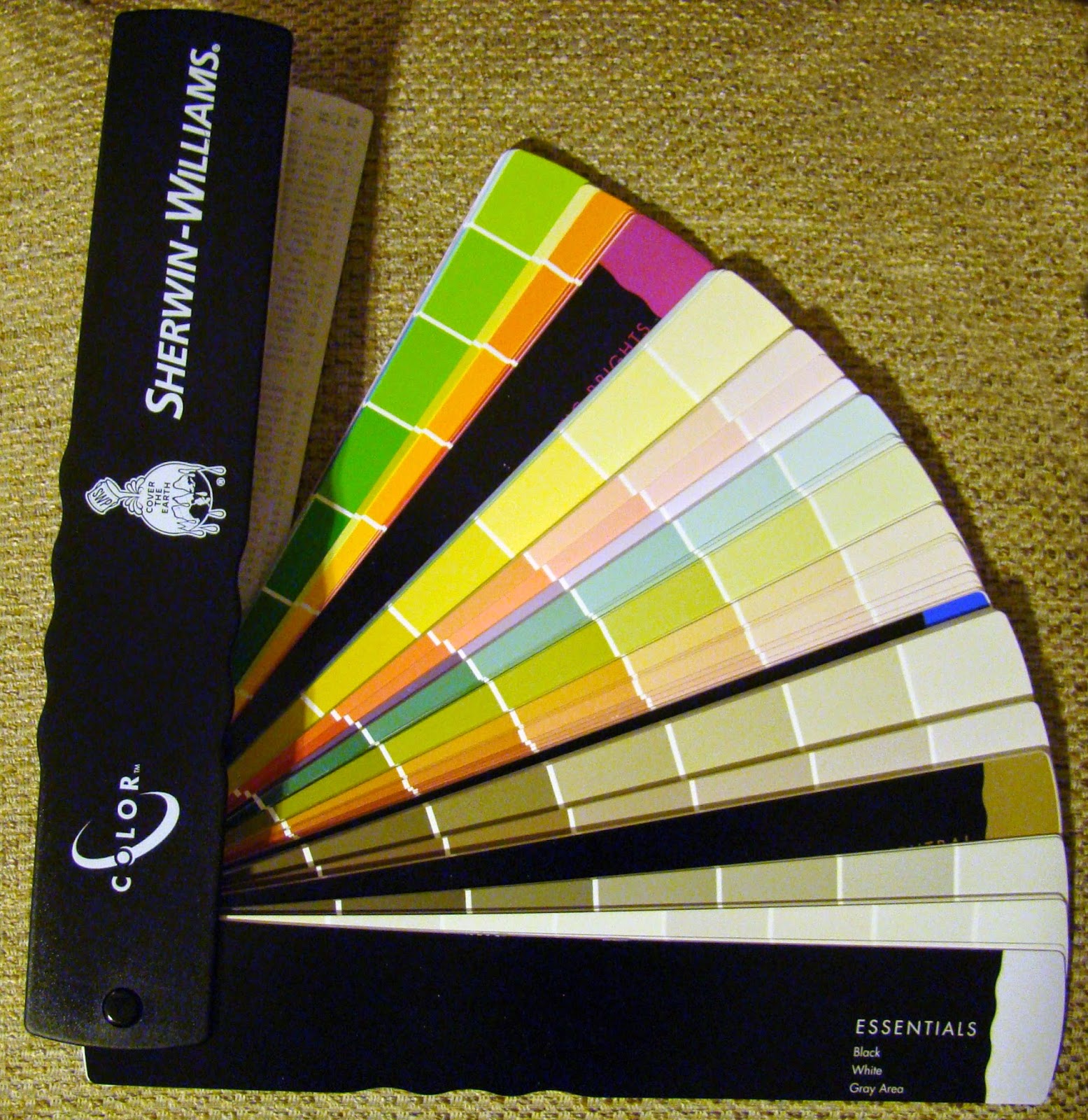 |
| Sherwin Williams Color Chart |
One more note on the Pantone colors is that these charts can be used to make choices for color harmonies on your palette, but they are expensive. An excellent and more affordable substitute for this kind of preliminary planning of your painting is an interior color chip sample from the hardware store, or a book, shown at left, that some manufactures provide for interior designers.
At some point in your color studies, you will likely come across the terms subtractive color (mixing pigment) and additive color (mixing light). You can find quite a bit on this via the web, but for our purposes here we are talking mostly about mixing paint pigment choices. There is a good book on this topic titled Blue and Yellow don't make Green by Wilcox.
So how exactly do you decide how to choose what to put on your palette as you embark on your painting adventure??? Well, I remember a time when I wanted to know what the 'right' colors were for my own palette. After all, I didn't want to make a mistake since my focus was to learn to paint the 'right' way! However, there was the question of personal style too! So if you are just beginning, try to look at it a little differently as you move forward with your own studies. Questions about what colors are best to have on your palette will be based on the result you are aiming towards. By asking what pigments will give me a good clear mix vs muted will become a more personal preference intermingled with theory and facts. For example: A blue and yellow don't always make a true green because the blue or yellow might have a ting of red that will alter the result of the mixture. For this reason, many artists will use a warm and cool of each primary on their palette to get better control of mixes.
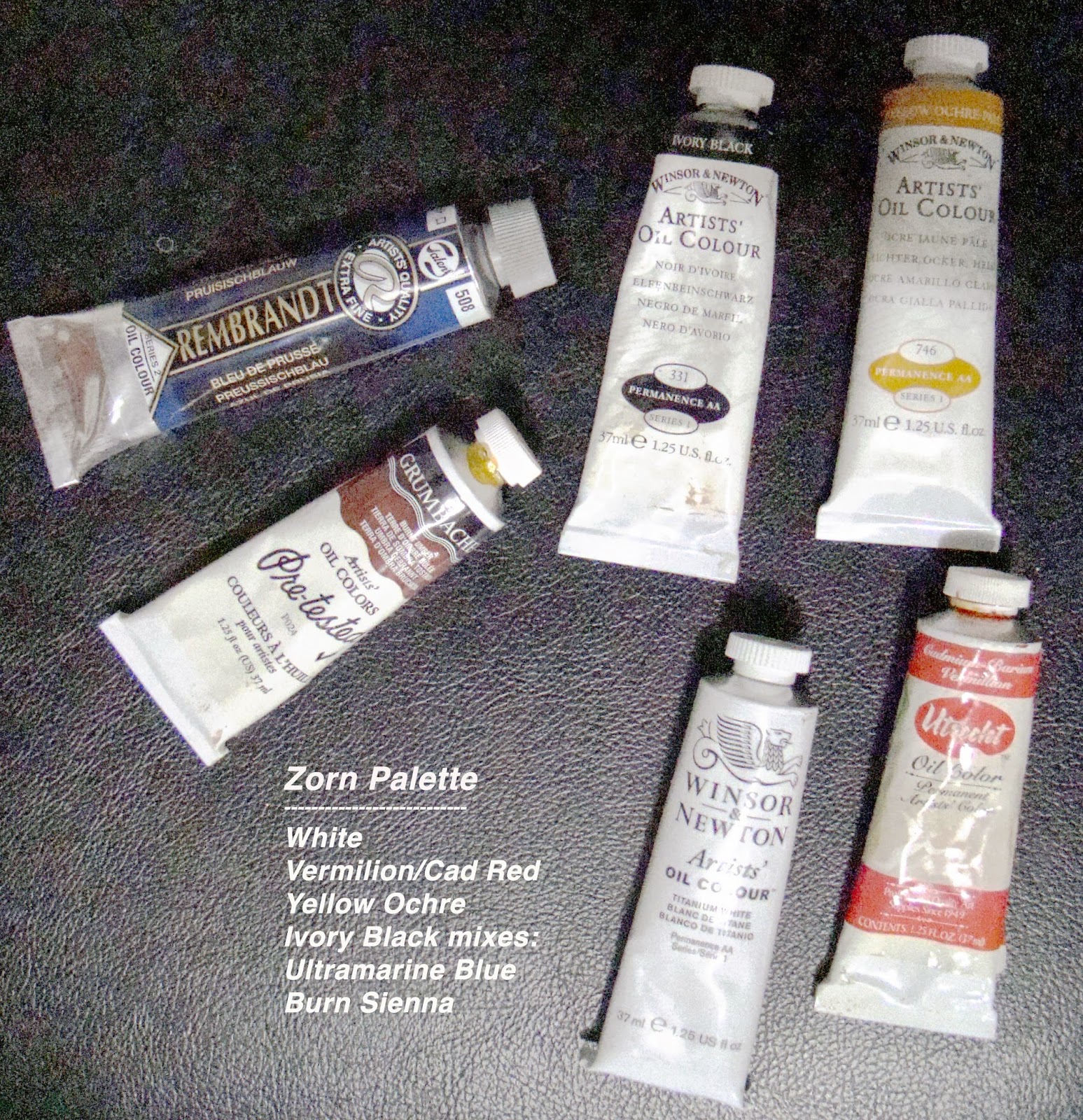 |
| Zorn Palette |
Should you use a limited palette? If a beginner, yes, but more experienced painters will too. Landscape painters often use a limited palette so not to have to carry a heavy load - it's for convenience. Maybe Alizarin Crimson, Cad Yellow, and Ultramarine Blue, with white in the field, and then add more colors when painting in the studio. Another limited palette is the 'Zorn Palette'; it will have a distinctive look, and when mastered will create beautiful images. This palette includes White, Yellow Ocher, Vermilion, and Warm and Cool Blacks - using ivory black mixed with either cobalt or burnt sienna.
(These paint brands you see to the right are just some that I have on hand-there are many good brands.)
You might also ask what shape palette works best for arranging your color? Or how do you lay out your colors on the palette - light to dark, or chromatically? Which one will give you the best control for mixing? These are things that you will eventually decide for personal working habits. I have changed mine more than once on this too. Sometimes it is just a matter of what is convenient for the particular setup.
As you have likely come to realize, there are unlimited approaches to color and painting. While reviewing a few facts on the various color systems, I came across a website that shares
59 different
Color System Theories!! Imagine that!!!
There is a color management system, not on the list, that comes to mind called the Fletcher System; this is using the traditional color wheel in a particular way to help a student learn color control. I will be writing more on this system in another post.
So much to study on color wouldn't you agree? How much do you NEED to know is up to you. For now, here is a link on
Oil Color Palettes that currently has about
75 artists' palettes used by contemporary painters and old masters. Really fun to see...
Happy painting!!!












